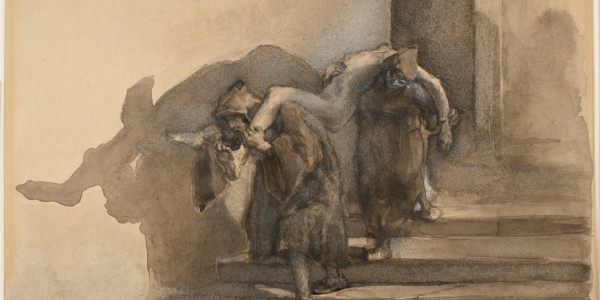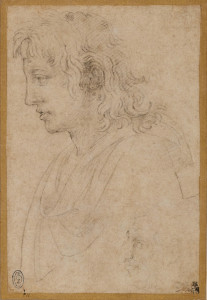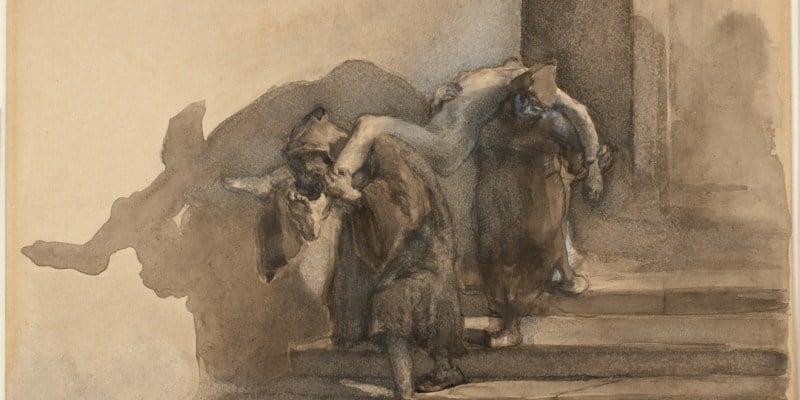
“500 Years of Italian Master Drawings from the Princeton University Art Museum,” currently on view at the Cantor Arts Center, features nearly 100 Italian artworks from the 15th to 20th century and is the first major exhibition devoted to the collection since the 1960s. The exhibit traces the origins of disegno — drawing — as the foundation for architecture, sculpture and painting, displaying a range of works from elaborate compositions to loosely rendered studies.
Italian artists like Michelangelo and Guercino have a distinct mastery of the human figure. A closer look at the works reveals remarkable subtleties in the anatomy of the figures, whose expressions are alive and believable.
Though the mediums employed generally consist of chalk and ink wash, there is considerable diversity in the artists’ styles. Il Guercino’s “Bearded Monk” carves the figure out of negative space using simple, energetic brush strokes and a singular pen line. Conversely, Lelio Orsi’s design for the facade of Casa Orsi is more developed. Orsi employs a dynamic composition wherein fully-rendered figures, each with seemingly distinct personalities, circle around the page.
Jacopo Zanguidi’s double-sided sheet of sketches is especially notable. Wrapped with gorgeous ink studies, the front of the page features an ink rendering of the Madonna and Child, while the back is a rough study of a coat of arms. Zanguidi first lays down the figure using precise pen lines before going into tones using brown ink, using tried-and-true methods of drawing to great effect.

A key selling point of the exhibit is that it provides a glimpse into the design process, giving a sense of the artists’ practice. Disegno was the conceptual foundation of the Renaissance and subsequent Italian cultural movements, as demonstrated by a series of studies done for commissions. For instance, Giovanni Paolo Lomazzo famously produced frescoes for the Foppa chapel in Milan in the late 1500s. In one sketch for the large-scale paintings, Lomazzo portrays two dramatically posed figures on opposite sides of a sheet of paper, roughly penciling in tones and musculature. Lomazzo’s hand is still very much alive, with still-distinguishable hatch marks and guidelines crisscrossing the page.
The exhibition draws particular attention to the breadth of the Italians’ expertise, showcasing their understanding of not only the figure, but also portraiture, lighting, composition and storytelling. In a series of five caricatures by Il Guercino, the artist mixes humor with his sensitivity towards human expressions and emotion. Guercino expertly captures pouting faces, stern bearded figures and mousey-looking scholars absorbed in literature. In a study for his piece “The Last Supper,” Filippo Bellini builds figures out of sienna-toned ink blobs and shadows, leaving lighted areas untouched. Similarly, Giovanni Battista Tiopolo’s “Faith, Hope and Charity,” is notable for its luminous and energetic quality.
“500 Years of Italian Master Drawings from the Princeton University Art Museum” does justice to the Italian figure drawing practice, placing particular focus on the process itself as opposed to just fully-rendered pieces.
“500 Years of Italian Master Drawings from the Princeton University Art Museum” is on view at the Cantor Arts Center until Aug. 24, 2015.
Contact Eric Huang at eyhuang ‘at’ stanford.edu.
